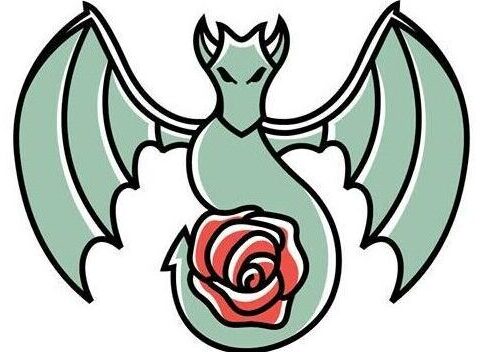Have you ever seen a bare-root rose? When you pull one out of the cool, moist mulch it’s stored in, all you see are a couple of thorny sticks on top, a couple of black roots on the bottom … if this is the bottom …. And you think, I’m spending twenty-some bucks for this? However, a good bare-root rose is worth every cent.
Bare-roots are much easier to handle than a big potted rose. (They’re much easier to send through the mail, too, if you order them through a catalog.) The selection of bare-roots early in the year is far better than what you will get with the potted roses later. Also, bare-root roses give you a head start on the planting season. It doesn’t matter how cold it is; bare-root roses can be planted as soon as the ground can be worked in early spring. Bare-root roses are dormant. Once you plant them, they “wake up” in their new home, and so they don’t get transplant shock the way potted roses do.
Remember that the very things that make bare-root roses great for early-season planting also make them very vulnerable to heat, sun, and drying winds. For best results, plant them as early in the season as possible. If you can’t avoid planting them late in the season, give them as much protection as possible through the process. (That is, bury them in mulch!)
Of course, before you purchase any rose, take time to make a good home for it. Choose a place with good, fertile soil that gets six or more hours of light daily. Avoid windy areas that will sap moisture from the leaves and canes. Keep the roses well away from trees, because roses are very heavy feeders, and the trees will steal nutrients from them.
Purchasing a bare-root rose.
Bare-root roses come in three grades – Grade 1, Grade 1.5, and Grade 2. The Grade 1 roses are of the highest quality. If you want to get really technical, Grade 1 roses have at least three strong canes, branched no higher than 3 inches above the bud graft, and each cane measures at least 5/16 inch in diameter. Grade 1.5 roses have only two canes. Grade 2 roses have one 5/16-inch cane and at least one at 1/4 inch. The Grade 1 roses are strongest and most vigorous.
When you inspect your bare-root rose, look for large (but tightly closed) buds and a reasonable number of large canes (at least three). Most bare-root roses will have green skin, but some will be brown. To check if the rose is alive, scratch away a bit of the rose’s skin with your fingernail. The cambium layer underneath should be green if the rose is living.
If the rose has started growing, don’t buy it. Bare-root roses do best if they’re still dormant when you plant them. If the top of the rose starts growing before the rose’s roots do, the rose can’t pull water and nutrients out of the ground fast enough to support this new growth. (Imagine being very thirsty, but you have to drink your water through a straw that’s as skinny as a coffee stirrer. That’s what’s happening to this poor rose.) Then it uses up its stored energy and dies.
Your best bet is to buy roses that are fully dormant, with tight buds and no growth.
Own-root roses and grafted roses.
There are two types of roses: Own-root roses and grafted roses. Grafted roses are where the rose canes are grafted onto a hardy set of roots (often a ‘Dr. Huey’ rose or a multiflora rose). They’ll have a swollen area on the neck of the rose, between the canes and the roots – that’s the graft union. Roses are grafted onto rootstocks because it takes a long, long time to grow rose cuttings on their own roots. Some roses, such as grandifloras, are fussbudgets and won’t grow until they’re stuck onto a hardy rootstock.
But own-root roses are hardier and healthier – a better choice if you can get them.
The bare-root rose may need a little “cleaning up” when you get it. Wipe off any white mold you see. The roots should be cut back about a half-inch, and broken stems and roots should be trimmed off. At some nurseries, the rosarians will do this for you if you ask politely.
If you order your bare-root roses through the mail, open and inspect your order as soon as you get it. Tell your supplier if any of your roses are growing new shoots. These roses have broken dormancy, so if they fail in the garden and die, you should be able to get them replaced.
In this diagram, “A” is the bud union. If the rose is grown on its own roots, “A” is just below where the branches meet the stem, and this can sit at soil level.
